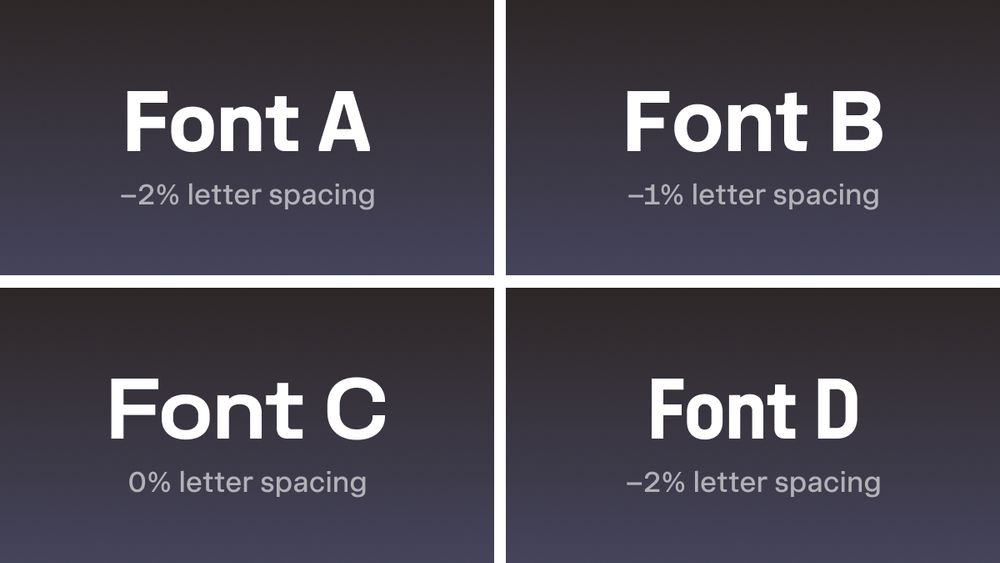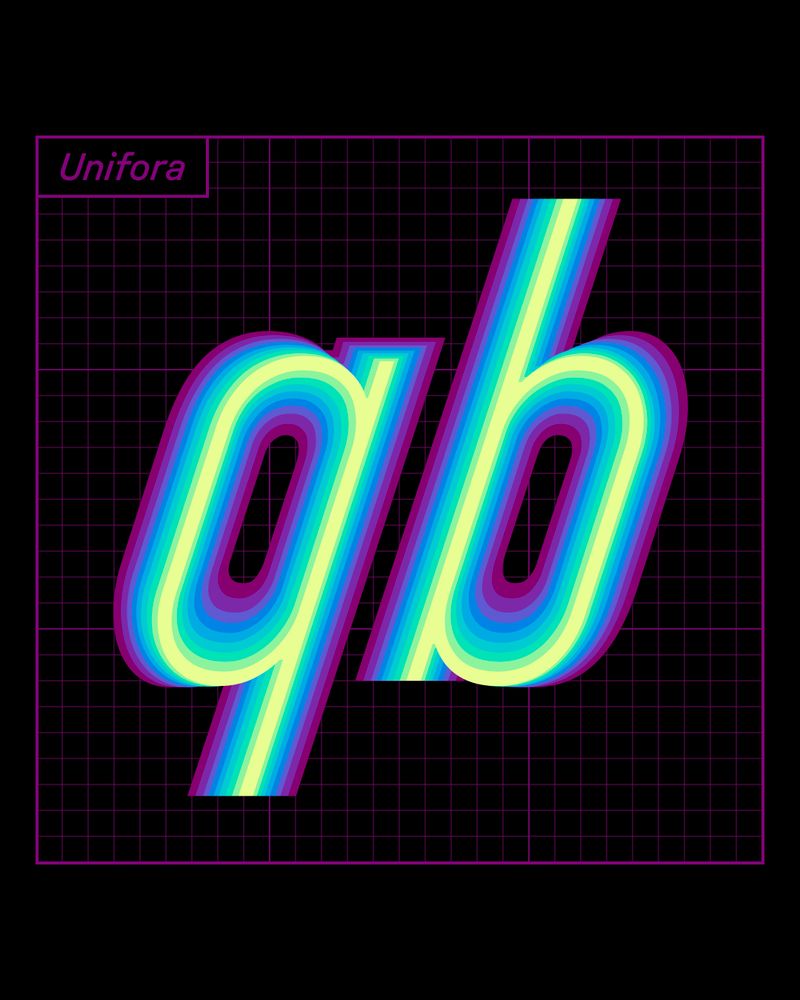
yeptype.com


Optical size can help adjust for light or dark themes. Some rare fonts also include a Grade axis, which lets you tweak character weight slightly without changing their width.

Optical size can help adjust for light or dark themes. Some rare fonts also include a Grade axis, which lets you tweak character weight slightly without changing their width.
There’s no one-size-fits-all value. A headline at 60px might need more negative spacing than one at 40px. Same goes for tiny caption text, a touch of extra spacing can go a long way.

There’s no one-size-fits-all value. A headline at 60px might need more negative spacing than one at 40px. Same goes for tiny caption text, a touch of extra spacing can go a long way.
At small sizes, the letters can feel cramped. Adding a bit of positive spacing helps open things up and improves legibility.

At small sizes, the letters can feel cramped. Adding a bit of positive spacing helps open things up and improves legibility.
As you scale up your text, the space between letters grows too. So if you’re using a text font at large sizes (say, 20px or more), it often helps to reduce letter spacing a little to keep things looking balanced.

As you scale up your text, the space between letters grows too. So if you’re using a text font at large sizes (say, 20px or more), it often helps to reduce letter spacing a little to keep things looking balanced.
Popular fonts like Inter or Poppins are designed to work well at common text sizes (usually between 14 and 18px) without any extra spacing tweaking.
That’s why they’re called “text fonts,” btw.
[Click the image to see the fonts at actual size]

Popular fonts like Inter or Poppins are designed to work well at common text sizes (usually between 14 and 18px) without any extra spacing tweaking.
That’s why they’re called “text fonts,” btw.
[Click the image to see the fonts at actual size]
The problem is, these tips often get read as “always use Font X with Spacing Y.” That might sound helpful, but it’s not how typography works.

The problem is, these tips often get read as “always use Font X with Spacing Y.” That might sound helpful, but it’s not how typography works.
I get it, it’s a popular format that drives engagement. But as a type designer, I can tell you: following this kind of advice blindly can hurt your typography.
Below are 4 strategies for setting letter spacing that will help improve your design work.

I get it, it’s a popular format that drives engagement. But as a type designer, I can tell you: following this kind of advice blindly can hurt your typography.
Below are 4 strategies for setting letter spacing that will help improve your design work.
To make the diagonal appear straight at the center of the cross, the type designer slightly breaks and shifts it inward.
To make the diagonal appear straight at the center of the cross, the type designer slightly breaks and shifts it inward.
For iconic companies, creating custom fonts isn’t just a design choice, it’s a strategic one.
When all you have is black text on a white background, a distinctive typeface becomes one of the most powerful ways to stand out.

For iconic companies, creating custom fonts isn’t just a design choice, it’s a strategic one.
When all you have is black text on a white background, a distinctive typeface becomes one of the most powerful ways to stand out.
And what a year it’s been: launching Innovator Grotesk, rolling out the 1.1 update, and most recently, the soft launch of Unifora.
Huge thanks to all the customers—this journey has brought some of the happiest moments of my life!
And what a year it’s been: launching Innovator Grotesk, rolling out the 1.1 update, and most recently, the soft launch of Unifora.
Huge thanks to all the customers—this journey has brought some of the happiest moments of my life!
One of its key features is an extended slant axis, supporting both italics and retalics up to ±18°.
It’s a powerful type family for expressive visuals and bold brand identities.
One of its key features is an extended slant axis, supporting both italics and retalics up to ±18°.
It’s a powerful type family for expressive visuals and bold brand identities.



It’s variable across three axes—weight (from Thin to Black), width (from Condensed to Expanded), and slant (up to 18° in either direction)—giving designers complete creative freedom.
It’s variable across three axes—weight (from Thin to Black), width (from Condensed to Expanded), and slant (up to 18° in either direction)—giving designers complete creative freedom.
www.omoi.co/projects/cli...

www.omoi.co/projects/cli...
www.yeptype.com/fonts/unifor...
www.yeptype.com/fonts/unifor...
www.yeptype.com/fonts/unifor...
www.yeptype.com/fonts/unifor...
www.yeptype.com/fonts/unifor...

www.yeptype.com/fonts/unifor...
www.yeptype.com/fonts/unifor...
www.yeptype.com/fonts/unifor...
www.yeptype.com/fonts/unifor...
www.yeptype.com/fonts/unifor...





